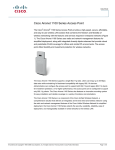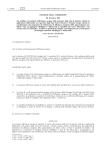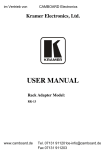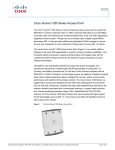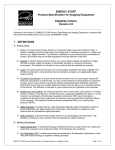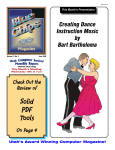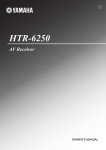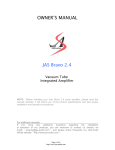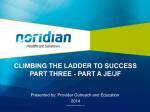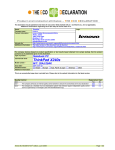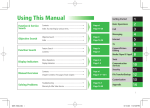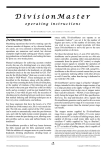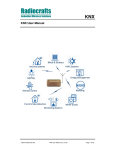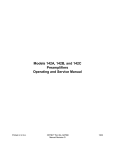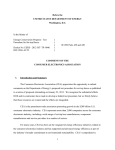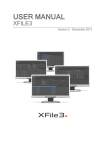Download Schedule - 16 Office Equipments
Transcript
Bureau of Energy Efficiency Revision: 1 Date: 21 July,2014 st Schedule - 16 Office Equipments (Printers, Scanners, Copiers, Fax Machines and Multi Function Devices) 1. Scope (i.)This schedule specifies the energy labeling requirements for office equipment namely copiers, printers, fax machines, scanners and multi-function devices for office automation and similar use. (ii.)This schedule is for only single phase office equipment (printers, scanners, copiers, fax machines and multi-function devices) which operate at the standard voltage and frequency range specified by the relevant Indian Standards and the Indian Electricity Rules 1956. (iii.)Office equipment (Printers, Scanners, Copiers, Fax Machines and Multi-Function Devices) shall meet all the requirements specified in this schedule for the purpose of labeling. (iv.)This Standard has been prepared on the basis of Energy Star specification for imaging equipment1 developed by US Environment Protection Agency (EPA). 2. Exclusions to the Scope The following products are not a part of the Schedule a. Production Printing Machines - A product whose primary function is to print very High Volumes & at High Speed ranging from 55 ppm onwards. It is a Color, Black & White and Custom Color cut sheet and continuous feed production printers and digital presses for large volume transaction bill printing, graphic arts, and for commercial printing and publishing. b. Large Format Printers - Products designed for A2 media and larger, including those designed to accommodate continuous-form media greater than or equal to 406mm wide. These products are also capable of printing on standard size or small format media but are primarily used for large engineering, manufacturing, architecture and construction companies who require large prints of designs of products, 3D Rendering etc. Also widely 1 http://www.energystar.gov/ia/partners/product_specs/program_reqs/Imaging_Equipment_Program_Requirements.pdf Schedule for Office Equipments (Printers, Scanners, Copiers, Fax Machines and Multi Function Devices) Page 1 Bureau of Energy Efficiency used for indoor display graphics applications. The Large Format Printers are also popularly known as Wide Format Printers. 3. Definitions: The definitions of the various terms used in this schedule is as follows: A) Product Types: 3.1. Office Printer: A product whose primary function is to generate hard-copy output from electronic input. A printer is capable of receiving information from single-user or networked computers, or other input devices (e.g., digital cameras). This definition is intended to cover products that are marketed as printers, and printers that can be fieldupgraded to meet the definition of an MFD. 3.2. Scanner: A product, whose primary function is to convert hard copy originals into electronic images that can be stored, edited, converted, or transmitted, primarily in a personal computing environment. This definition is intended to cover products that are marketed as scanners. 3.3. Copier: A product whose sole function is to produce hard copy duplicates from hard copy originals. This definition is intended to cover products that are marketed as copiers, and upgradeable digital copiers (UDCs). 3.4. Facsimile (Fax) Machine: A product whose primary functions are (1) to scan hard copy originals for electronic transmission to remote units, and (2) to receive electronic transmissions for conversion to hard copy output. A fax machine may also be capable of producing hard copy duplicates. Electronic transmission is primarily over a public telephone system, but may also be via a computer network or the Internet. This definition is intended to cover products that are marketed as fax machines. 3.5. Multifunction Device (MFD): A product that performs two or more of the core functions of a Printer, Scanner, Copier, or Fax Machine. An MFD may have a physically integrated form factor, or it may consist of a combination of functionally integrated components. MFD copy functionality is considered to be distinct from single-sheet convenience copying functionality sometimes offered by fax machines. This definition includes products marketed as MFDs, and “multi-function products” (MFPs). B) Marking Technologies: 3.6. Direct Thermal (DT): A marking technology characterized by the burning of dots onto coated print media that is passed over a heated print head. DT products do not use ribbons. Schedule for Office Equipments (Printers, Scanners, Copiers, Fax Machines and Multi Function Devices) Page 2 Bureau of Energy Efficiency 3.7. Dye Sublimation (DS): A marking technology characterized by the deposition (sublimation) of dye onto print media as energy is supplied to heating elements. 3.8. Electro-photographic (EP): A marking technology characterized by the illumination of a photoconductor in a pattern representing the desired hard copy image via a light source, development of the image with particles of toner using the latent image on the photoconductor to define the presence or absence of toner at a given location, transfer of the toner to the final print media, and fusing to cause the hard copy to become durable. For purposes of this specification, Color EP products simultaneously offer three or more unique toner colors, while Monochrome EP products simultaneously offer one or two unique toner colors. This definition includes Laser, Light Emitting Diode (LED), and Liquid Crystal Display (LCD) illumination technologies. 3.9. Impact: A marking technology characterized by the formation of the desired hard copy image by transferring colorant from a “ribbon” to the print media via an impact process. This definition includes Dot Formed Impact and Fully Formed Impact. 3.10. Ink Jet (IJ): A marking technology characterized by the deposition of colorant in small drops directly to the print media in a matrix manner. For purposes of this specification, Color IJ products offer two or more unique colorants at one time, while Monochrome IJ products offer one colorant at a time. This definition includes Piezoelectric (PE) IJ, IJ Sublimation, and Thermal IJ. This definition does not include High Performance IJ. 3.11. High Performance IJ: An IJ marking technology that includes nozzle arrays that span the width of a page and/or the ability to dry ink on the print media via supplemental media heating mechanisms. High-performance IJ products are used in business applications usually served by electro-photographic marking products. 3.12. Solid Ink (SI): A marking technology characterized by ink that is solid at room temperature and liquid when heated to the jetting temperature. This definition includes both direct transfer and offset transfer via an intermediate drum or belt. 3.13. Thermal Transfer (TT): A marking technology characterized by the deposition of small drops of solid colorant (usually colored waxes) in a melted/fluid state directly to print media in a matrix manner. TT is distinguished from IJ in that the ink is solid at room temperature and is made fluid by heat. C) Operational Modes: 1. On Mode: a) Active Mode: Definition as defined in Clause 3.8 of IEC 62301 : 2011 Schedule for Office Equipments (Printers, Scanners, Copiers, Fax Machines and Multi Function Devices) Page 3 Bureau of Energy Efficiency b) Ready State: The power state, in which a product is not producing output, has reached operating conditions, has not yet entered into any lower-power Modes, and can enter Active State with minimal delay. All product features can be enabled in this state, and the product is able to return to Active State by responding to any potential inputs, including external electrical stimulus (e.g., network stimulus, fax call, or remote control) and direct physical intervention (e.g., activating a physical switch or button). 2. Off Mode: Definition as defined in Clause 3.5 of IEC 62301 : 2011 3. Sleep Mode: A reduced power state that a product enters either automatically after a period of inactivity (i.e., Default Delay Time), in response to user manual action (e.g., at a user-set time of day, in response to a user activation of a physical switch or button), or in response to external electrical stimulus (e.g., network stimulus, fax call, remote control). a. For products evaluated under the TEC test method, Sleep Mode permits operation of all product features (including maintenance of network connectivity), albeit with a possible delay to transition into Active State. b. For products evaluated under the OM test method, Sleep Mode permits operation of all product features considered Primary Function adders, albeit with a possible delay to transition into Active State. e) Standby: Definition as defined in Clause 3.6 of IEC 62301:2011 For Office Equipments addressed by this schedule, the “Standby” Mode usually corresponds to Off Mode, but may correspond to Ready State or Sleep Mode. Hence whichever is the lowest power state among Ready, Sleep, Auto-off and Off state shall be considered as the standby power mode for office equipments under this schedule. A product cannot exit Standby and reach a lower power state unless it is physically disconnected from the main electricity supply as a result of manual manipulation. D) Media Format: 1. Large Format: Products designed for A2 media and larger, including those designed to accommodate continuous-form media greater than or equal to 406 mm wide. Large-format products may also be capable of printing on standard-size or small-format media. 2. Standard Format: Products designed for standard-sized media (e.g., Letter, Legal, Ledger, A3, A4, B4), including those designed to accommodate continuous-form media between 210 mm and 406 mm wide. Standard-size products may also be capable of printing on small-format media. Schedule for Office Equipments (Printers, Scanners, Copiers, Fax Machines and Multi Function Devices) Page 4 Bureau of Energy Efficiency 3. Small Format: Products designed for media sizes smaller than those defined as Standard (e.g.,A6, 4”x6”, microfilm), including those designed to accommodate continuous-form media less than 210 mm wide. 4. Continuous Form: Products that do not use a cut-sheet media format, and that are designed for applications such as printing of bar codes, labels, receipts, banners, and engineering drawings. Continuous form products can be of small, standard, or large format. Others: 1. Marking Engine: The fundamental engine of an imaging product that drives image production. A marking engine relies upon functional adders for communication ability and image processing. Without functional adders and other components, a marking engine cannot acquire image data for processing and is non-functional. 2.Base Product: The most fundamental configuration of a particular product model, which possesses the minimum number of functional adders2 available. Optional components and accessories are not considered part of a base product. 3. Family of models: Family of models is the range of models of one particular brand, to which a single set of test reports is applicable and where each of the models has the same relevant physical characteristics, energy consumption, and energy efficiency rating and performance characteristics. The term ‘model’ is synonymous with ‘family of models’. For office equipment, acceptable variations within a product family include: Color Housing Input or output paper-handling accessories, or Any of the functional adders. 4. Variant: A model variant is an alternative version of a model which has the same sales specification and the same model number or other form of designation as another version of the model, and offers the same performance except that it has different standby mode power consumption. . 5. Model Number: A unique marketing name that applies to a specific hardware/software configuration that is either predefined, or a configuration that is selected by the customer. 6. Model Name: A marketing name that includes reference to both the office equipment model family number, a short description of the product, or branding references. 2 Functional Adders or Add On: Data and network interface that adds functionality to the marking engine of an imaging equipment product and provides a power allowance when qualifying products according to the test method. Schedule for Office Equipments (Printers, Scanners, Copiers, Fax Machines and Multi Function Devices) Page 5 Bureau of Energy Efficiency 7. Pre-qualification Requirements A. Commercially-available office equipments that meet one of the Product Type definitions in Section 2 and are capable of being powered from (1) a wall outlet, (2) a data or network connection, or (3) both a wall outlet and a data or network connection, are eligible for BEE STAR qualification. B. The products shall confirm to the requirements of relevant Indian standards for both safety and performance requirements to participate in BEE STAR labeling program. C. To qualify for the BEE Star labeling, the office equipment shall satisfy the requirements as specified in the clause 3.3 & 3.4 under ‘Qualification Criteria’ of ENERGY STAR Program Requirements for Imaging Equipment. 8. Standby Power Requirements: Standby Mode power, which is the lesser of the Ready Mode Power, Sleep Mode Power, and Off Mode Power, as measured in the test procedure, shall be less than or equal to 1 W for all Operational Mode (OM) products . 9. Testing Procedure: To qualify as BEE Star labeled product, the units must be tested according to test protocol outlined in Appendix A of this schedule. Manufacturers are required to perform tests and self-certify those models that meet the BEE Star Label requirements: a. The test results must be reported to BEE. b. The test results must be reported in the format outlines in Appendix B along with the lab test report Detailed Test Procedures is defined in Appendix A. 10. Tolerance limits: There is no tolerance in the energy consumption criteria for obtaining the BEE label. All tested products must meet the maximum threshold for OM and TEC products. The scope for manufacturing tolerance and other variations shall be accounted for while applying for the BEE Star label. 11. Label Design and Manner of Display: The label design and manner of display will be as defined as follows: For initial one year from date of the launch of the program, manufacturers can affix the BEE Star label either on the carton box or on the products itself. After the period of one year, the committee will again review the prospects of the decision to make it mandatory to affix label on both the carton box and the product or not. Sample Label is given in Annexure 1. 12. Labeling related fees: Refundable security deposit payable for registration of every company/firm for BEE Standard & Labeling program is Rs.100000/- (Rupees One Lakh), which is Rs. 25000/- Schedule for Office Equipments (Printers, Scanners, Copiers, Fax Machines and Multi Function Devices) Page 6 Bureau of Energy Efficiency (Rupees Twenty Five Thousand) for SSI industries, provided they upload their duly valid SSI certificate on BEE’s e-filling portal. Registration fee payable on each application for authority to affix labels is Rs.1000/(Rupees One Thousand Only). Labeling fee for affixation of label on each piece of qualified product is 0.03% of the product MRP declared by the user of the label (manufacturer / trader / importer) at the time of product-model registration under each equipment category. Registration fee payable on each application for renewal of authority to affix labels is Rs.500/- (Rupees Five Hundred Only). 13.Future Specification Revisions BEE reserves the right to revise the schedule should technological and/or market changes affect its usefulness to consumers or industry or its impact on the environment. In keeping with current policy, revisions to the schedule will be discussed with stakeholders. In the event of a schedule revision, please note that BEE qualification is not automatically granted for the life of a product model. To qualify as Star labeled product, a product model must meet the BEE’s standard in effect on the model’s date of manufacture. Schedule for Office Equipments (Printers, Scanners, Copiers, Fax Machines and Multi Function Devices) Page 7 Bureau of Energy Efficiency APPENDIX A: Test Procedure for Determining the Standby Power Consumption in Office Equipments 1. OVERVIEW The following test method shall be used for determining product compliance with requirements in the BEE STAR Eligibility Criteria for Office Equipment. 2. DEFINITIONS Unless otherwise specified, all terms used in this document are consistent with the definitions given in the section 3 of this schedule. Unit Under Test (UUT): The specific sample of a Representative Model undergoing measurement, which includes the base product and any accessories packaged with it. 3. TEST SETUP A. AC Input Power: Products intended to be powered from AC mains shall be connected to a voltage source appropriate for the intended market. Products shipped with external power supplies (EPSs) shall first be connected to the EPS and then to the voltage source specified in Table 1. Table 1: Test Conditions Test Voltage: 230 (± 1%) Volts AC, 50 Hz (± 1%) Note: For products rated for > 1.5 kW maximum power, the voltage range is ± 4% Total Harmonic Distortion (THD) (Voltage): Ambient Temperature: Relative Humidity: < 2% THD (< 5% for products which are rated for > 1.5 kW maximum power)3 27±5ºC 10 – 80 % B. Low-voltage DC Input Power: 1) Products may only be powered with a low-voltage DC source (e.g., via network or data connection) if the DC source is the only acceptable source of power for the product (e.g., no AC plug or EPS is included with the product). 3 IEC 62301 Schedule for Office Equipments (Printers, Scanners, Copiers, Fax Machines and Multi Function Devices) Page 8 Bureau of Energy Efficiency 2) Products powered by low-voltage DC shall be configured with an AC source of the DC power for testing (e.g., an AC-powered USB hub). 3) Reported UUT power shall be equal to the AC power consumption of the low-voltage DC source with the UUT as the load, minus the AC power consumption of the low-voltage DC source with no load (PS), as measured per section 5 of this procedure. C. Ambient Temperature: Ambient temperature shall be 27±5ºC. Note: For a initial period of one year from the date of revision of this schedule (ie., date of revision 1), the ambient temperature shall be followed as 23±5ºC and thereafter ambient temperature conditions shall be followed as 27±5ºC. D. Relative Humidity: Relative humidity shall be from 10% to 80%. E. Power Meter: Power meters shall possess the following attributes: 1) Minimum Frequency Response (Recommended): 3.0 kHz 2) Minimum Resolution: i) 0.01 W for measurement values less than 10 W; ii) 0.1 W for measurement values from 10 W to 100 W; iii) 1 W for measurement values from 100 W to 1.5 kW; and iv) 10 W for measurement values greater than 1.5 kW. v) Measurements of accumulated energy should have resolutions which are generally consistent with these values when converted to average power. For accumulated energy measurements, the figure of merit for determining required accuracy is the maximum power value during the measurement period, not the average, since it is the maximum that determines the metering equipment and setup. F. Measurement Accuracy: 1) Measurements made with these procedures shall in all cases have an accuracy of 5% or better, though manufacturers will usually achieve better than this. Test procedures may specify greater accuracy than 5% for some measurements. With knowledge of the power levels of current imaging products and the meters available, manufacturers can calculate the maximum error based on the reading and the range utilized for the reading. 2) For measurements of 0.50 W or less, the required accuracy is 0.02 W. G. Time Measurement: Time measurements may be performed with an ordinary stopwatch with resolution of at least 1 second. H. Paper Specifications: Schedule for Office Equipments (Printers, Scanners, Copiers, Fax Machines and Multi Function Devices) Page 9 Bureau of Energy Efficiency 1) The Paper used while testing the Office Equipments (Printers, Scanners, Copiers, Fax Machine and Multi Function Devices) shall be in accordance with Table 2. 2) Large, small, and continuous format products shall be tested using any compatible paper size. Table 2: Paper Size and Weight Requirements Market Paper Size India A4 Basis Weight (g/m2) 80 4. LOW-VOLTAGE DC SOURCE MEASUREMENTS FOR ALL PRODUCTS 1) Connect the DC source to the power meter and relevant AC supply as specified in Table 1. 2) Verify that the DC source is unloaded. 3) Allow the DC source to warm up for a minimum of 30 minutes. 4) Measure and record the unloaded DC source power (PS) according to IEC 62301 Ed. 1.0. 5. PRE-TEST UUT CONFIGURATION FOR ALL PRODUCTS 5.1. General Configuration A) Product Speed for Calculations and Reporting: The product speed for all calculations and reporting, shall be the highest speed as claimed by the manufacturer as per the following criteria, expressed in images-per-minute (ipm) and rounded to the nearest integer: 1) In general, for Standard-size products, a single A4 or 8.5" x 11" sheet printed/copied/scanned on one side in a minute is equal to one image-per-minute (ipm) 2) For all products, the product speed shall be based on: i) The manufacturer-claimed print speed, unless the product cannot print, in which case, ii) The manufacturer-claimed copy speed, unless the product cannot print or copy, in which case, iii) The manufacturer-claimed scan speed. 3) For non-continuous-form products the product speed shall be calculated per Table 4. If the maximum claimed speeds differ when producing images on A4 or 8.5" x 11" paper, the higher of the two shall be used. Schedule for Office Equipments (Printers, Scanners, Copiers, Fax Machines and Multi Function Devices) Page 10 Bureau of Energy Efficiency Table 3: Calculation of Product Speed for Standard, Small, and Large Format Products4 Media Format Standard Small Large Media Size Product Speed, s (ipm) Where: sp is the maximum claimed monochrome speed in pages-perminute when processing the given media 8.5" x 11" A4 4" x 6" A6 A2 A0 sp sp 0.25 x sp 0.25 x sp 4 x sp 16 x sp 4) For continuous-form products, product speed shall be calculated per Equation 1 Equation 1: Calculation of Product Speed s =16wsL Where: •s is the product speed, in images per minute (ipm), •w is the width of the media, in meters (m), •sL is the maximum claimed monochrome speed, in length-meters- per-minute. B) Color: Color-capable products shall be tested making monochrome images unless incapable of doing so. C) Network Connections: Products that are capable of being network-connected as-shipped shall be connected to a network. 5) The type of network connection (or other data connection if not capable of being networked) is at the discretion of the manufacturer, and the type used shall be reported. 5.2.Configuration for Fax Machines A) Fax machines need not be connected to a telephone line unless the telephone line is necessary for performing the test. 4 ENERGY STAR Program Requirements for Imaging Equipment Schedule for Office Equipments (Printers, Scanners, Copiers, Fax Machines and Multi Function Devices) Page 11 Bureau of Energy Efficiency B) Unless sending jobs via phone line, originals may be placed in the document feeder before the test begins. 1) Products without a document feeder may make all images off a single original placed on the platen. 2) Fax machines shall be tested with one image per job. 6. PRE-TEST UUT INITIALIZATION FOR ALL PRODUCTS A) Prior to the start of testing, the UUT shall be initialized as follows: 1) Set up the UUT per the instructions in the Manufacturer's Instructions or documentation. i) Accessories such as paper source and finishing hardware that are intended to be installed or attached by the end-user shall be installed; however, their use in the test is at the manufacturer's discretion (e.g., any paper source may be used). 2) Connect the UUT to its power source. 3) Power on the UUT and perform initial system configuration, as applicable. Verify that default delay times are configured according to product specifications and/or manufacturer recommendations. i) Product Speed for Testing: The product shall be tested with speed settings in their default as- shipped configuration. ii) Auto-off for OM Products: If a product has an Auto-off Mode enabled as shipped, it shall be enabled prior to performing the test. iii) Auto-off for TEC Products: If a printer, digital duplicator or MFD with print-capability, or fax machine has an Auto-off capability and it is enabled as shipped, it shall be disabled prior to the test. 4) User-controllable anti-humidity features may be turned off or disabled for the duration of testing. 5) Let the UUT sit for at least 15 minutes, or until it has completed initialization and is ready for use. 6) For products designed to operate on battery power when not connected to the mains, the battery shall be either: i) Removed from the product; or Schedule for Office Equipments (Printers, Scanners, Copiers, Fax Machines and Multi Function Devices) Page 12 Bureau of Energy Efficiency ii) Fully charged for at least 24 hours before beginning the test and left in place for the test. 7. Test Methods The office equipment covered under this schedule shall follow the test methods as mentioned in Table 4: Table 4: Test methods for Office Equipments Product Type Copiers Fax Machine* Multi Function Devices (MFDs) Media Format Standard Large Standard Standard Large Standard Printers Marking Technology Test Method DT, DS, EP, SI, TT DT, DS, EP, SI, TT TEC OM IJ OM DT, DS, EP, High performance IJ, SI, TT IJ DT, DS, EP, IJ, SI, TT TEC OM OM DT, DS, EP, SI, TT, High performance IJ TEC Impact, IJ OM Large or DT, DS, EP, Impact, IJ, SI, OM Small TT Scanners All N/A OM * Fax Machine with Ink-jet marking technology is only covered under the scope of this schedule. 7.1.Measurement Procedures 7.1.1 For the equipments follows Operational Mode tests: Measurement of standby power shall be conducted according to Table 5, subject to the following provisions: 1) All power consumption figures shall be recorded in watts (W) in accordance with IEC 62301, unless otherwise specified in this document. 2) Confidence Level or Accuracy: The accuracy requirement for this OM test procedure is 2% for all measurements except for Ready power, where it is 5%. The 2% figure is consistent with IEC 62301. Schedule for Office Equipments (Printers, Scanners, Copiers, Fax Machines and Multi Function Devices) Page 13 Bureau of Energy Efficiency 3) Service/Maintenance Modes: Service/maintenance modes (including color calibration) generally should not be included in measurements. Any adaptation of the procedure needed to exclude such modes that occur during the test shall be noted. Table 5: Testing procedure Operational Mode Products Ste p 1 Initial Action(s) State Off Plug the unit into meter. Turn on unit. -Wait until unit indicates it is in Ready Mode. Record Unit of Measure -- 2 Ready Print, copy, or scan a single image. -- -- 3 Ready Measure Ready power. Ready power, PREADY Watts (W) 4 Ready Wait and measure default delay-time to Sleep defaultdelay time, Sleep. tSLEEP Minutes (min) 5 Sleep Measure Sleep power. Watts (W) Sleep power, PSLEEP 6 Sleep Auto-off defaultWait and measure default delay time to delay time Auto-off. (Disregard if no Auto-off Mode) Minutes (min) 7 Auto off Measure Auto-off power. (Disregard if Auto-off power no Auto-off Mode) PAUTOOFF Watts (W) 8 Auto off Manually turn device off and wait until --unit is off. (If no manual on-off switch, note and wait for lowest-power Sleep state). --- 9 Off Measure Off power. (If no manual on-off Off power switch, note and measure Sleep Mode POFF power). Watts (W) Notes: Schedule for Office Equipments (Printers, Scanners, Copiers, Fax Machines and Multi Function Devices) Page 14 Bureau of Energy Efficiency Step 1 - If the unit has no Ready indicator, use the time at which the power consumption level stabilizes to the Ready level, and note this detail when reporting the product test data. Steps 4 and 5 - For products with more than one Sleep level, repeat these steps as many times as necessary to capture all successive Sleep levels and report this data. Two Sleep levels are typically used in large-format copiers and MFDs that use high-heat marking technologies. For products lacking this Mode, disregard Steps 4 and 5. Steps 4 and 6 - Default-delay time measurements are to be measured in parallel fashion, cumulative from the start of Step 4. For example, a product set to enter a Sleep level in 15 minutes and enter a second Sleep level 30 minutes after entering the first Sleep level will have a 15-minute default-delay time to the first level and a 45 minute default-delay time to the second level. 7.1.2 For the equipments follow Typical Energy Consumption (TEC) tests: Measurement of TEC shall be conducted according to Table 7 for printers, fax machines, digital duplicators with print capability, and MFDs with print capability, and Table 8 for copiers, digital duplicators without print capability and MFDs without print capability, subject to the following provisions: 1) Paper: There shall be sufficient paper in the device to perform the specified print or copy jobs. 2) Duplexing: Products shall be tested in simplex mode. Originals for copying shall be simplex images. 3) Service/Maintenance Modes: Service/maintenance modes (including color calibration) should generally not be included in TEC measurements. i) Any service/maintenance modes that occur during the test shall be noted. ii) If a service/maintenance mode occurs during a job other than the first job, the results from the job with the service/maintenance mode may be replaced with results from a substitute job. In this case, the substitute job shall be inserted into the test procedure immediately following Job 4. The 15-minute job interval shall be maintained at all times. 4) Accuracy: The specifications of the metering equipment and ranges used in each measurement shall be reported. Measurements must be conducted so as to result in a total potential error of the TEC value of no more than 5%. Accuracy does not need to be reported for cases where the potential error is below 5%. When the potential measurement error is close to 5%, manufacturers should take measures to confirm that it complies with the 5% limit. 5) Energy Measurement Method: All measurements shall be recorded as accumulated energy over time, in watt-hours (Wh); all time shall be recorded in seconds or minutes. (i)“Zero meter” references may be accomplished by recording the accumulated energy consumption at that time rather than literally zeroing the meter. 6) Job Structure: A) Jobs per Day: The number of jobs per day (NJOBS) is specified in Table 6. Schedule for Office Equipments (Printers, Scanners, Copiers, Fax Machines and Multi Function Devices) Page 15 Bureau of Energy Efficiency Table 6: Number of Jobs per Day (NJOBS) Monochrome Product Jobs per Speed, s Day (ipm) (NJOBS) s≤8 8 8 < s < 32 S s ≥ 32 32 B) Images per Job: 1) Except for fax machines, the number of images shall be computed according to Equation 2, below. For convenience, Table 10 at the end of this document provides the resultant images per job computation for each integer product speed up through 100 images per minute (ipm). Equation 2: Calculation of Number of Images per Job NIMAGES = int (0.5xs2) N JOBS Where: NIMAGES is the number of images per job, rounded down (truncated) to the nearest integer, s is the (monochrome) maximum reported speed in images per minute (ipm), calculated in section 5.1.A), of this test procedure, and NJOBS is the number of jobs per day, as calculated per Table 6. C) Test Image: Test Pattern A from ISO/IEC standard 10561:1999 shall be used as the original image for all testing. 1) Test images shall be rendered in 10 point size in a fixed-width Courier font (or nearest equivalent) 2) German-specific characters need not be reproduced if the product is incapable of German character reproduction. D) Print Jobs: Print jobs for the test may be sent over non-network connections (eg., USB), even on those units that are network-connected. 1) Each image in a print job shall be sent separately, i.e., all images may be part of the same document, but shall not be specified in the document as multiple copies of a single original image (unless the product is a digital duplicator). 2) For printers and MFDs that can interpret a page description language (PDL) (e.g., PCL, Postscript), images shall be sent to the product in a PDL. E) Copy Jobs: 1) For copiers with speed less than or equal to 20 ipm, there shall be one original per required image. Schedule for Office Equipments (Printers, Scanners, Copiers, Fax Machines and Multi Function Devices) Page 16 Bureau of Energy Efficiency 2) For copiers with speed greater than 20 ipm, it may not be possible to match the number of required original images (e.g., due to limits on document feeder capacity). In this case, it is permissible to make multiple copies of each original, and the number of originals shall be greater than or equal to ten. Example: For a 50 ipm unit that requires 39 images per job, the test may be performed with four copies of 10 originals or three copies of 13 originals. 3) Originals may be placed in the document feeder before the test begins. i) Products without a document feeder may make all images off of a single original placed on the platen. Table 7: TEC Test Procedure for Printers, Fax Machines, Digital Duplicators with Print Capability, and MFDs with Print Capability Step Initial State 1 Off 2 Off 3 Ready 4 5 Action Connect The Unit Under Test To The Meter. Ensure The Unit Is Powered And In Off Mode. Zero the meter, measure energy over 5 minutes or more. Record both energy and time. Off energy Turn on unit. Wait until unit indicates it is in Ready Mode. - Print a job of at least one output image but no more than a single job per Job Table. Measure and record time to first sheet exiting unit. Active 0 time Ready Wait until the meter shows that the (or other) unit has entered its final Sleep Mode or 4 hours. Sleep Record (at end of step) Zero meter; measure energy and time over 1 hour. Record the energy and time. Testing Interval time Unit of Measure Watt-hours (Wh) Hours (h) Off - - Hours (h) - - - Sleep energy, ESLEEP Sleep time, tSLEEP (≤ 1 hour) Possible States Measured Watt-hours (Wh) Sleep Hours (h) Schedule for Office Equipments (Printers, Scanners, Copiers, Fax Machines and Multi Function Devices) Page 17 Bureau of Energy Efficiency 6 7 Ready Repeat Step 6. (or other) 8 Ready Repeat Step 6 (without Active time (or other) measurement). 9 Ready Repeat Step 6 (without Active time (or other) measurement). 10 Sleep Zero meter and timer. Print one job (calculated above). Measure energy and time. Record time to first sheet exiting unit. Measure energy over 15 minutes from job initiation. The job must finish within the 15 minutes. Ready Zero meter and timer. Measure energy and time until meter and/or unit shows that unit has entered Sleep Mode or the final Sleep Mode for units with multiple Sleep modes, or 4 hours. Job1 energy, EJOB1 Active 1 time Job2 energy, EJOB2 Active2 time Job3 energy, EJOB3 Job4 energy, EJOB4 Final energy, EFINAL Final time, tFINAL Watt-hours (Wh) Hours (h) Watt-hours (Wh) Recovery, Active, Ready, Sleep Same as above Hours (h) Watt-hours (Wh) Same as above Watt-hours (Wh) Same as above Watt-hours (Wh) Ready, Sleep Hours (h) Notes: Steps 4 and 10 – it may be unclear to independent testers which Sleep Mode is the final one and therefore a 4 hour time limit is provided. Table 8: TEC Test Procedure for Copiers, Digital Duplicators without Print Capability, and MFDs without Print Capability Step 1 2 Initial State Off Off Action Connect the unit under test to the meter. Ensure the unit is powered and in Off Mode. Zero the meter, measure energy over 5 minutes or more. Record both energy and time. Turn on unit. Wait until unit has entered Ready Mode. Copy a job of at least one image but Record (at end of step) Off energy Testing Interval time Unit of Measure Watt-hours (Wh) Off Hours (h) Active 0 time Possible States Measured - - Hours (h) - Schedule for Office Equipments (Printers, Scanners, Copiers, Fax Machines and Multi Function Devices) Page 18 Bureau of Energy Efficiency 3 4 Ready no more than a single job per Job Table. Measure and record time to first sheet exiting unit. Wait until the meter shows that the Ready unit has entered its final Sleep Mode (or other) or 4 hours. Sleep energy 5 Sleep Zero meter; measure energy and time over 1 hour or until unit enters Auto-Off Mode. Record the energy and time. Zero meter and timer. Copy one job (calculated above). Measure and record energy and time to first sheet exiting unit. Measure energy over 15 minutes from job initiation. The job must finish within the 15 minutes. Sleep time (≤ 1 hour) - - Watt-hours (Wh) Sleep Hours (h) Job1 energy, EJOB1 Watt-hours (Wh) Active 1 time Hours (h) Hours (h) Ready Repeat Step 6. (or other) Job2 energy, EJOB2 Active2 time 8 Ready Repeat Step 6 (without Active time (or other) measurement). Job3 energy, EJOB3 Watt-hours (Wh) Watt-hours (Wh) 9 Ready Repeat Step 6 (without Active time (or other) measurement). Job4 energy, EJOB4 Watt-hours (Wh) Zero meter and timer. Measure energy and time until meter and/or unit shows that unit has entered its Auto-off Mode or 4 hours. Record energy and time; if unit began this step already in Auto-off Mode, report both energy and time values as zero. Final energy, EFINAL Watt-hours (Wh) 6 7 10 11 Sleep Ready (or other Auto-off Zero the meter; measure energy and time over 5 minutes or more. Record both energy and time Final time, tFINAL Auto-off energy, EAUTO Auto-off time, tAUTO Hours (h) Watt-hours (Wh) Recovery, Active, Ready, Sleep, Auto-off Same as above Same as above Same as above Ready, Sleep Auto-off Hours (h) Notes: Schedule for Office Equipments (Printers, Scanners, Copiers, Fax Machines and Multi Function Devices) Page 19 Bureau of Energy Efficiency Steps 4 and 10 – it may be unclear to independent testers which Sleep Mode is the final one and therefore a 4 hour time limit is provided. Schedule for Office Equipments (Printers, Scanners, Copiers, Fax Machines and Multi Function Devices) Page 20 Bureau of Energy Efficiency APPENDIX B: Format for reporting the test results 1. Company Details Applicant Manufacturer Model No./Name Model Family Name 2. Equipment Details Product Type (tick whichever applicable) Marking Technology applicable) (tick Printer Scanners Copiers Fax Machines Multi Function Device whichever Direct Thermal (DT) Media Format (tick whichever applicable) Dye Sublimation (DS) Electro-Photographic (EP) Impact Ink Jet (IJ) High Performance IJ Solid Ink (SI) Thermal Transfer (TT) Large Format Standard Format Small Format PREADY (W) PSLEEP (W) PAUTO-OFF (W) POFF (W) Standby Mode Power Consumption (Lowest of the above power modes) for OM products Typical Energy Consumption for TEC products Summary Declaration: Name Date: Schedule for Office Equipments (Printers, Scanners, Copiers, Fax Machines and Multi Function Devices) Page 21 Bureau of Energy Efficiency Annexure - I Label Design and Manner of Display 8. Material and Shape: The label shall be self–adhesive if it has to be pasted on the appliance. If the label is to be attached as a swing tag, then it shall be made of durable cardboard. The design of the label shall be as given in the following figure. The label design in .cdr (corel draw) format can be downloaded from BEE’s website for accurate design and colour scheme. Black Outline 1.5 pt Yellow Text (Arial Bold) Blue C:97, M:95, Y:6, K:1 Green C:81, M:10, Y:90, K:1 Red Yellow Y:40 Black Text (Arial Bold) Black Text (Arial Bold) Schedule for Office Equipments (Printers, Scanners, Copiers, Fax Machines and Multi Function Devices) Page 22






















